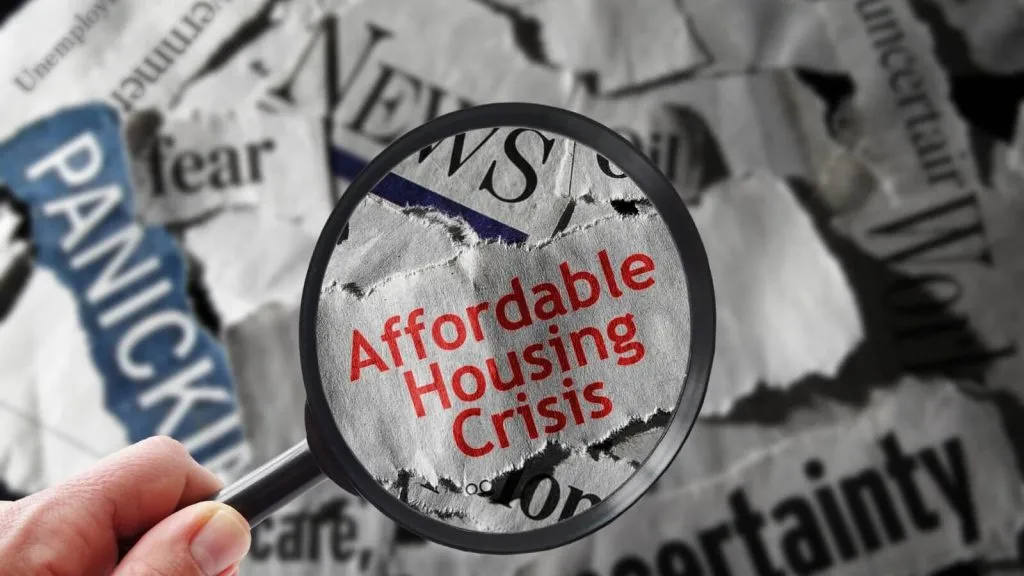The housing crisis has left many low-income individuals and families teetering on the edge of financial instability. Finding affordable and safe housing can be a daunting task, with property owners playing a pivotal role in either alleviating or worsening the hardships faced by those seeking shelter.
This blog explores the dynamics of low-income renting, why affordable housing is important, and the role property owners play in this situation.
The Low-Income Rental Landscape
Low-income renting is a term that encompasses a wide range of situations, from government-subsidized housing programs to private rental arrangements. It’s crucial to understand the landscape of low-income renting before discussing anything else:
- Government Housing Programs: Many governments worldwide offer affordable housing programs that aim to provide safe and affordable housing to low-income individuals and families. These programs often come with eligibility criteria, waiting lists, and a rigorous application process.
- Private Rentals: A significant portion of low-income individuals rent from private landlords who own apartments, houses, or multi-unit buildings. Private rentals vary widely in terms of quality, price, and landlord behavior.
A dissertation by Dr. Anna Perlmutter, Ph.D. in Organizational Behavior and 8-year landlord for lower-income residents in Cleveland, OH points out a massive connection between private ownership and harmful renting habits that disproportionately affect those who need low-income housing. She states, “Low-income rental housing is defined by scarcity. In the present system, the landlord’s role is responsible for allocating scarce resources to stakeholders, resulting in conflict and compromise for all involved, especially low-income renters.”
So how do property owners impact low-income housing specifically? And why does affordable housing matter for the general well-being of the community? Let’s discuss.
The Problem with Housing Insecurity

In the United States, there is a deficit of over 7 million affordable homes for the 10.8 million or more families with extremely low incomes. There isn’t a single state or county where a renter working full-time at minimum wage can afford a two-bedroom apartment, much less a one-bedroom apartment.
“While housing insecurity can affect both homeowners and renters, it is much higher in renting
populations, especially those who are low-income earners. These individuals are more
likely to be rent-burdened, vulnerable to eviction, and lack adequate support services to
stabilize their living situation,” says Dr. Perlmutter. “Housing insecurity disproportionately affects the most vulnerable communities in the United States, including children, people of color, veterans, LGBTQ+ populations, and the mentally ill. Nearly a third of all renters are severely housing cost-burdened, spending more than half of their incomes on rent and utilities.”
This is a huge problem! When families can’t afford to do anything but pay bills, it doesn’t give them the financial means to provide for themselves in other areas. Add expensive renting to the mix and that begins to create a homelessness problem.
Why Low-Income Housing Matters
Housing plays a crucial role in decreasing long-term poverty and boosting financial progress. Studies indicate that making affordable housing more accessible is the best way to lessen child poverty and enhance economic advancement in the United States.
“Eviction is a frequent and, in some cases, an annual fact of life for many of America’s poorest renters, leading to many damaging impacts to health and wellness, economic mobility, education, community and family stability, susceptibility to crime, violence, and trauma, among other well-documented detrimental outcomes,” states Dr. Perlmutter.
Improving access to low-cost housing boosts the economy. Studies reveal that the lack of such housing costs the U.S. economy around $2 trillion annually due to reduced wages and productivity. Without affordable homes, families have limited chances to boost their income. This then turns to affecting local and national economies. But most importantly, it hinders the success of lower-income families and individuals struggling with homelessness.
The Role of Property Owners
Property owners play a critical role in the lives of low-income renters. Dr. Perlmutter states, “Landlords are critical ‘gatekeepers’ in the rental housing market. Their perceptions shape the markets in which they operate and, as such, their perceptions and resulting actions are key to understanding the rental housing landscape and market outcomes. This is particularly true with regards to their responses to the public sector.”
“In the private sector, the landlord serves as the fulcrum between public housing policy and the public that is to be housed. Navigating a complex array of opportunities and challenges ranging from economic concerns to regulatory requirements to emotive and interpersonal exchanges, landlords make decisions that shape the lives of their residents in dramatic and enduring ways.”
It’s important to note that there is an understanding that property ownership/management is a business that needs to profit as well, we aren’t trying to discredit the need for property owners to have substantial rates and standards in order to keep steady profit. What is important to note are the property owners who don’t take into consideration the need to connect with the community or invest in affordable housing.
How Property Owners Hurt Low-Income Renters
- High Rents: Some property owners take advantage of the housing shortage by charging excessively high rents, leaving low-income renters struggling to make payments. This can lead to housing instability, eviction, and homelessness.
- Poor Maintenance: Neglecting property maintenance and repairs can create unsafe living conditions for residents. This not only affects the quality of life but can also jeopardize health and well-being.
- Discrimination: Although illegal, low-income renters, particularly those from marginalized communities, may face discrimination when trying to secure housing. Discriminatory practices by landlords contribute to social inequality and exclusion. It is important to note that discrimination due to race, color, nationality, religion, sex, family status, or disability is illegal under the Fair Housing Act.
- Eviction Practices: Some landlords resort to aggressive eviction practices, such as no-cause evictions, that disproportionately impact low-income renters. These practices can disrupt lives and worsen financial instability.
The Impact on People’s Lives

The way landlords interact with low-income renters directly influences their lives. When landlords are supportive and responsible, it can provide stability and a sense of security. When private and public sectors get the real chance to connect with each other and the community to learn the true consequences of inaccessible low-income housing, they can create a flourishing environment from the bottom up. Here are some positive impacts that affordable housing can provide:
- Fewer Evictions: Housing stability is at the core of affordable housing which aims to prevent evictions regardless of economic climate.
- Overall Better Health: A person’s housing plays a significant role in determining their overall health and well-being. It is considered a crucial factor (among many other factors) that can greatly influence various aspects of an individual’s health and quality of life.
- Healthier Economy: When people feel better and have more resources supporting them, they feel more secure. When residents of affordable housing communities are able to afford their rent, they have the opportunity to allocate more of their income towards local purchases, which in turn benefits the local economy (as well as the national economy).
- More Job Opportunities: The building and construction of affordable housing create more jobs, even well after they are built. Also having stable housing ensures that more people can focus on maintaining their jobs instead of worrying about where to sleep.
- Ending the Cycle of Poverty: Another long-term economic benefit of affordable housing is the chance to decrease generational and childhood poverty.
- Increased Financial Health: Affordable housing checks off a stability factor that can increase financial health. As more individuals have more money to allocate to other things, they can begin saving more of their paychecks or making other financial decisions that were not previously accessible to them.
Support Affordable Housing
Supporting affordable housing programs is an investment in the well-being of our community. Here are some resources for housing assistance in Wisconsin:


